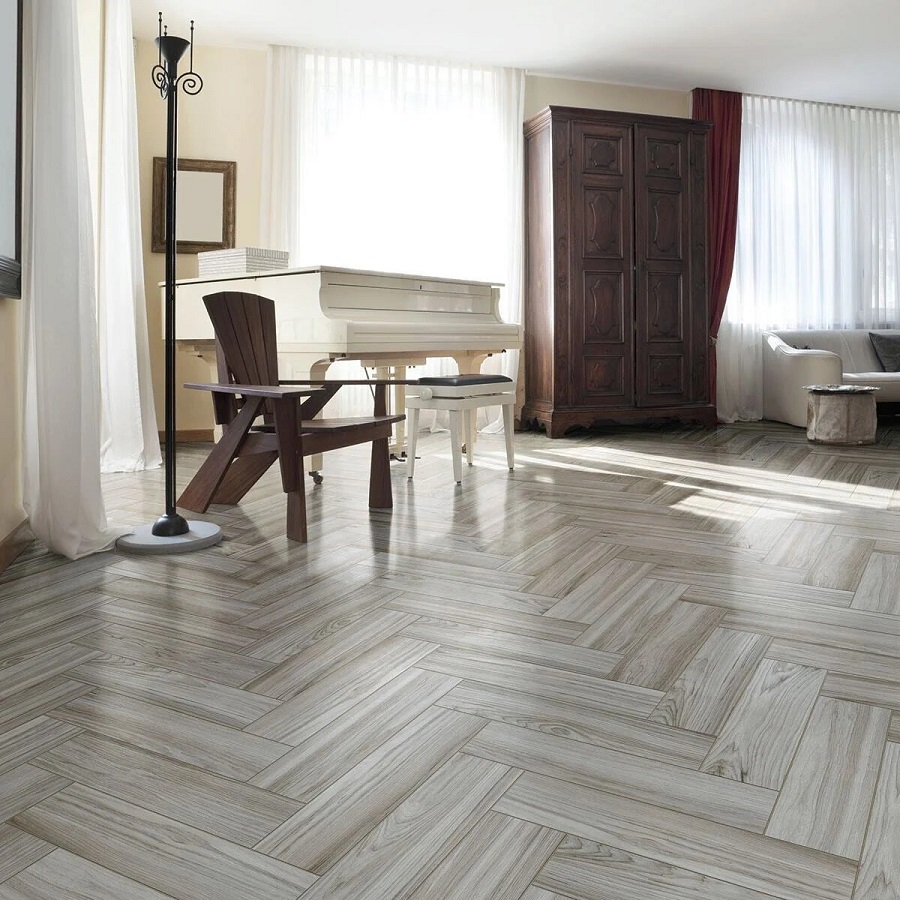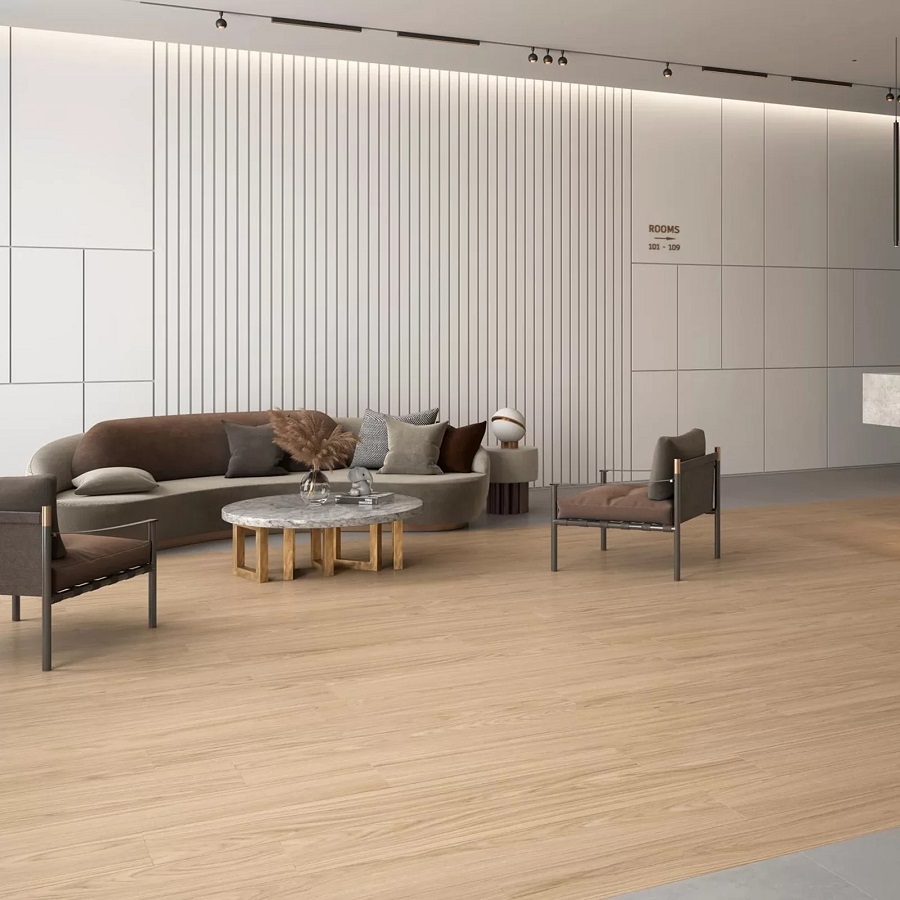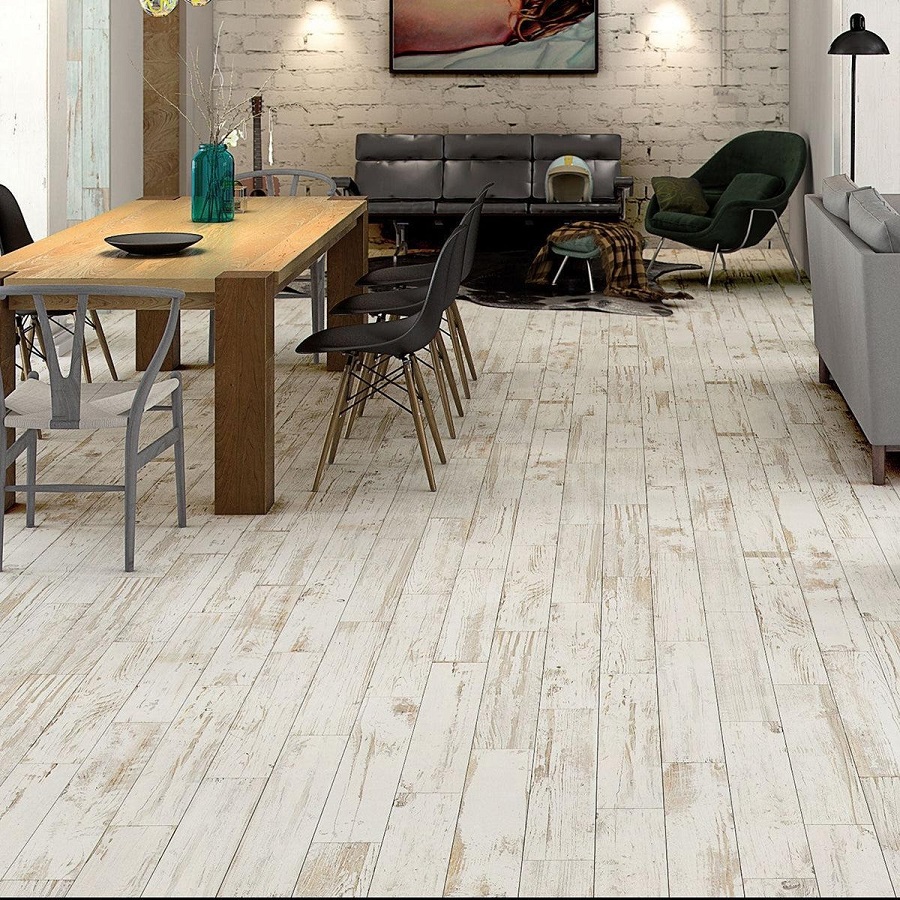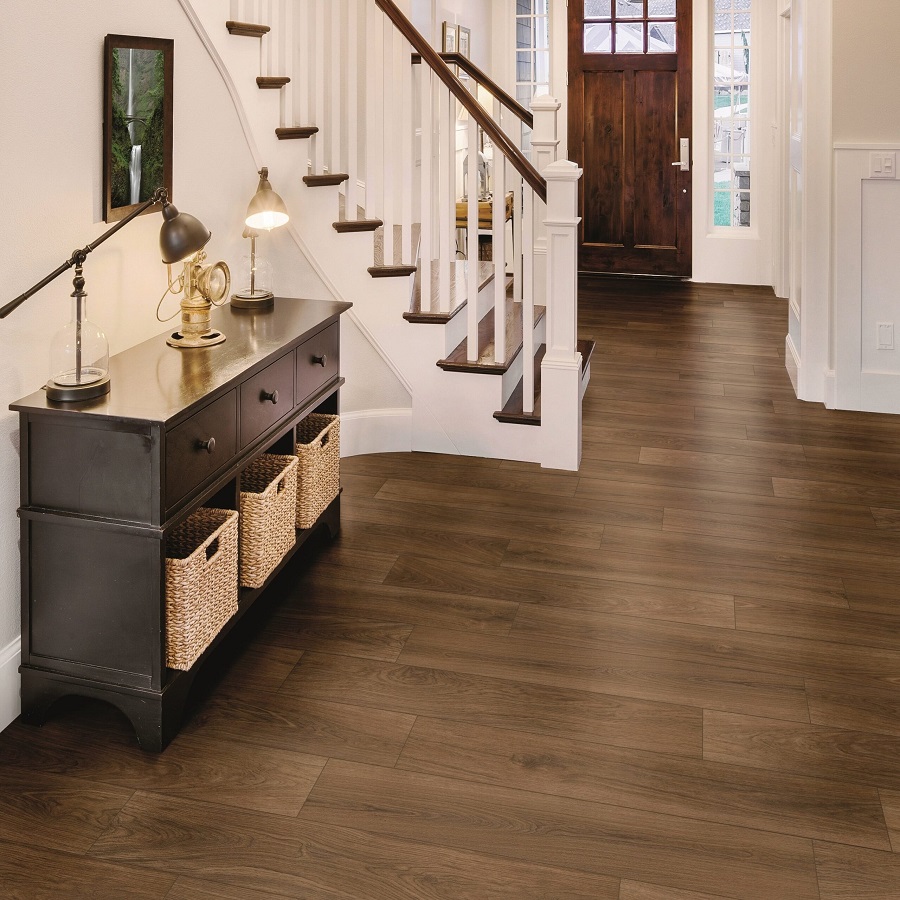Introduction to Wood Look Ceramic Tile
The allure of wood look ceramic tile continues to grow. These tiles faithfully mimic the natural appearance of wood. They offer the charm of traditional timber without the upkeep. In 2025, technology has refined their design to an impressive level. The detail in these tiles now features realistic grain and texture variations, just like real wood. Homeowners and designers choose wood look ceramic tile for its durability and versatility. It fits well in various settings like kitchens, bathrooms, and even outdoor areas.

The Evolution of Wood Look Ceramic Tile Design
The design of wood look ceramic tile has undergone notable changes. In the past, options were limited, with tiles often having uniform patterns and a glossier finish that could hardly pass for genuine wood. Now, breakthroughs in high-definition printing have allowed for intricate detail mimicking real wood’s textures and grain. Every tile boasts unique patterns, making the overall effect more natural and authentic.
Manufacturers now use advanced technologies to create variations in color and texture. These variations fool the eye into thinking it’s walking on a hardwood floor. This advancement in design choices caters to distinct personal preferences. It allows for matching diverse interior styles, from rustic to contemporary.
Advantages of Choosing Wood Look Ceramic Tile in 2025
The year 2025 brings more reasons to choose wood look ceramic tile. Let’s explore the key advantages that make this flooring option stand out.
Durability and Longevity
Wood look ceramic tiles are renowned for their strength. They resist scratches, dents, and general wear. Unlike real wood, they won’t warp or buckle over time. That means they’re great for high-traffic areas. They’ll last for years, making them a smart investment.
Water and Stain Resistance
These tiles are practically immune to water damage. This quality alone makes them a top pick for bathrooms and kitchens. They also resist stains. Spills can be wiped away with ease. Homeowners love this low-maintenance aspect.
Low Upkeep
Speaking of maintenance, wood look ceramic tiles need little attention. Regular sweeping and mopping will keep them looking fresh. There’s no need for sanding or refinishing, which is a plus over hardwood.
Aesthetic Versatility
With a range of styles and colors, these tiles can fit any design scheme. They harmonize with modern and traditional decors alike. Whether you want a cozy or a sleek look, there’s a tile for that.

Popular Color Trends for Wood Look Ceramic Tile
As we gaze into 2025’s decor trends, color plays a pivotal role. For wood look ceramic tile, color is not just a choice; it’s an expression of style and personality. Homeowners and designers are drawn to shades that reflect both the warmth of natural wood and the contemporary taste for minimalism and elegance. Here are the top color trends for wood look ceramic tiles that you should keep an eye on:
Cool versus Warm Tones
Amidst a plethora of hues, the tug-of-war between cool and warm tones continues. Cool grays and pale blues offer a refreshing and modern ambiance. They aim to produce a serene, clean environment. On the flip side, warm honey and rich walnut shades seek to create a snug and inviting atmosphere. These hues emulate the traditional look of classic hardwood floors.
Whitewashed and Bleached Effects
Trends are shifting towards softer, more subdued wood aesthetics. Tiles with a whitewashed look are leading the charge. They give a space a relaxed, coastal feel. At the same time, bleached wood tiles convey a rustic yet refined vibe. Their lighter color values are perfect for small spaces to create an illusion of openness.
Dark and Moody Hues
For those who favor a bold statement, dark and moody colors are in vogue. Espresso brown and charcoal black tiles are setting the trend for dramatic and luxurious spaces. They lay the foundation for opulent interior design, resonating with an air of sophistication.
Natural and Earthy Tones
Sustainability continues to influence color choices with tiles that feature natural, earthy tones. Shades like terracotta, beige, and olive bring the outside in. They connect interiors with the natural world, fostering a reassuring sense of harmony and balance.
In the ever-evolving world of wood look ceramic tile, colors are paramount. They set the stage for a room’s atmosphere and align with diverse design visions. Moreover, these trends highlight the versatility of wood look tiles to accommodate various aesthetic desires, ensuring there’s a perfect match for any space.
Innovative Installation Patterns for Wood Look Tiles
With design trends always evolving, innovative installation patterns for wood look ceramic tiles have become a highlight in 2025. These patterns are not just about laying tiles; they define spaces, add interest, and amplify the natural beauty of wood look tiles. Here are some of the creative patterns that have emerged as favorites among homeowners and designers alike:

Herringbone and Chevron Patterns
The classic herringbone and chevron patterns offer a dynamic visual effect. With their zigzag lines, they inject movement into any room. These patterns work well in both small and large spaces, making them versatile.
Basket Weave and Lattice Designs
For a touch of elegance, the basket weave and lattice designs are gaining popularity. They produce a sophisticated look that is both timeless and modern.
Large Format Tile Placements
Large format tiles are a big hit, creating fewer grout lines and a sleek, continuous wood look. This trend favors clean, minimalist aesthetics, making spaces appear larger.
Exploring these innovative patterns provides a fresh take on wood look ceramic tile installation. Each adds a unique touch to the floor and can transform the ambiance of any space. They also cater to personal style preferences, offering more ways to customize interiors. Choosing the right pattern can greatly enhance the natural allure of a wood look tile, making it a central feature of home design in 2025.
Sustainable Practices in Wood Look Ceramic Tile Manufacturing
Sustainable manufacturing is essential in 2025. It involves practices that reduce environmental impact. Companies in wood look ceramic tile production focus on eco-friendly processes. They strive to minimize waste and energy consumption. This shift aligns with global sustainability goals.
Use of Recycled Materials
Many tiles now contain recycled content. This eco-conscious approach lessens landfill waste. It also conserves natural resources. Tiles with recycled materials often have unique looks. Thus, they are appealing to those who value sustainability and style.
Energy-Efficient Production Methods
Manufacturers are adopting energy-efficient methods. They optimize kiln operations to save energy. Advanced technology also helps reduce carbon emissions. This makes the production process cleaner and greener.
Reduction of Water Usage
Water usage is a critical factor in tile production. Modern factories use water recycling systems. These systems reduce the need for fresh water. They also prevent wastewater from harming the environment.
Maintenance and Care Tips for Wood Look Tiles
Maintaining wood look ceramic tiles is straightforward. Here are practical tips to keep your tiles in top condition:
Regular Cleaning
Sweep or vacuum floors regularly to remove dust and dirt. For mopping, use a mild detergent with warm water. Avoid harsh chemicals that can damage the tile’s surface.
Immediate Spill Response
Tackle spills as soon as they happen. Quick cleanup prevents stains and keeps tiles looking new. Use a soft cloth for the best results.
Avoid Scratches
Place protective pads under furniture legs. This simple step can prevent scratches and protect your tiles’ integrity.
Grout Care
Keep grout lines clean and sealed. This prevents moisture from seeping through. It also maintains a clean, cohesive look.

Future Outlook: Technological Advancements in Tile Production
Predicting the future of wood look ceramic tile involves exploring upcoming technological advancements. These future enhancements promise to revolutionize tile production. Here’s what to expect in the next phase of their evolution:
Enhanced Printing Techniques
Expect sharper, more detailed graphics due to improved printing technologies. New methods will offer even greater realism in wood patterns. Each tile will be a closer match to natural wood’s intricate details.
Robotic Automation
Automation will streamline manufacturing, making it more efficient. Robots will handle delicate tasks with precision. This will increase production rates while maintaining high-quality standards.
